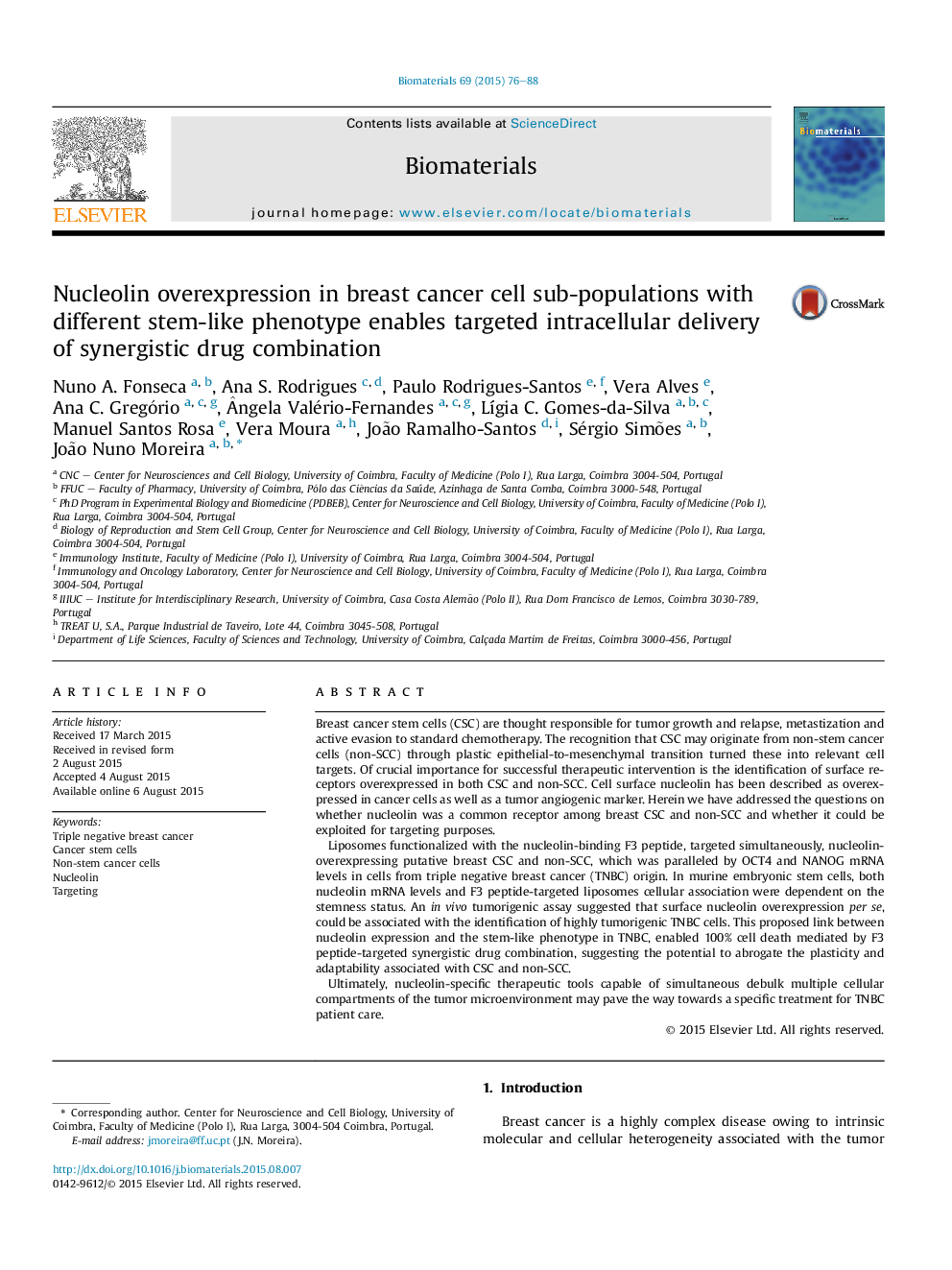| Article ID | Journal | Published Year | Pages | File Type |
|---|---|---|---|---|
| 5571 | Biomaterials | 2015 | 13 Pages |
Breast cancer stem cells (CSC) are thought responsible for tumor growth and relapse, metastization and active evasion to standard chemotherapy. The recognition that CSC may originate from non-stem cancer cells (non-SCC) through plastic epithelial-to-mesenchymal transition turned these into relevant cell targets. Of crucial importance for successful therapeutic intervention is the identification of surface receptors overexpressed in both CSC and non-SCC. Cell surface nucleolin has been described as overexpressed in cancer cells as well as a tumor angiogenic marker. Herein we have addressed the questions on whether nucleolin was a common receptor among breast CSC and non-SCC and whether it could be exploited for targeting purposes.Liposomes functionalized with the nucleolin-binding F3 peptide, targeted simultaneously, nucleolin-overexpressing putative breast CSC and non-SCC, which was paralleled by OCT4 and NANOG mRNA levels in cells from triple negative breast cancer (TNBC) origin. In murine embryonic stem cells, both nucleolin mRNA levels and F3 peptide-targeted liposomes cellular association were dependent on the stemness status. An in vivo tumorigenic assay suggested that surface nucleolin overexpression per se, could be associated with the identification of highly tumorigenic TNBC cells. This proposed link between nucleolin expression and the stem-like phenotype in TNBC, enabled 100% cell death mediated by F3 peptide-targeted synergistic drug combination, suggesting the potential to abrogate the plasticity and adaptability associated with CSC and non-SCC.Ultimately, nucleolin-specific therapeutic tools capable of simultaneous debulk multiple cellular compartments of the tumor microenvironment may pave the way towards a specific treatment for TNBC patient care.
